An Elizabethan noble man’s outfit from the 1560s, in red silk with black passementerie braid.
In the early years of Elizabeth’s reign, the typical noble man’s outfit consisted of a suit – a slim doublet and trunkhose, often of matching fabric, held together with points (laces). Similar styles were worn across much of Europe, including Spain and Italy.
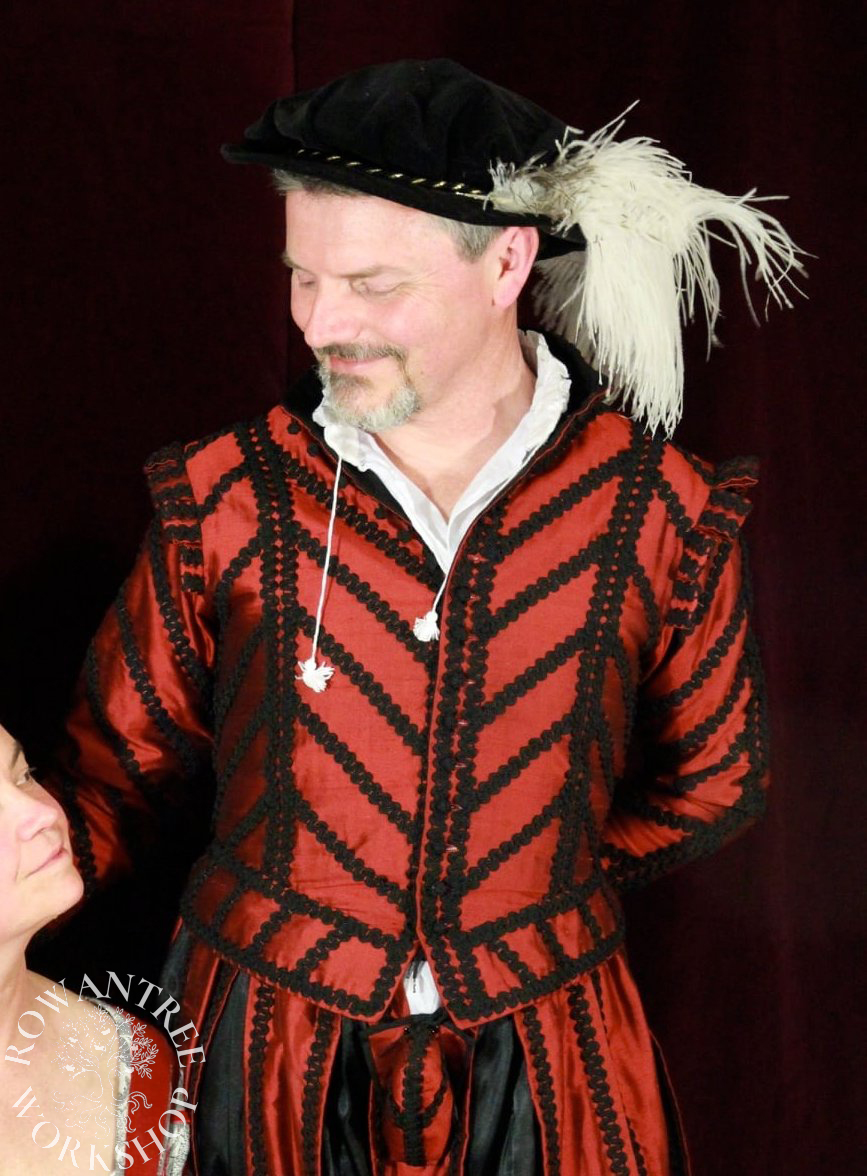
My first foray into high-end Elizabethan men’s clothing was prompted by a major formal event. I had made my husband Nico some quick middle class Elizabethan gear before, but I wanted this to be another level up.
Research and Design
The inspiration for the suit came from the portrait of Don Sebastian de Portugal, with it’s distinctive angled stripes, and related examples. The burial clothes of Don Garzia provide a wonderful extant example of a very similar outfit, and were analysed in detail in Janet Arnold’s Patterns of Fashion 3 (Arnold 1985).

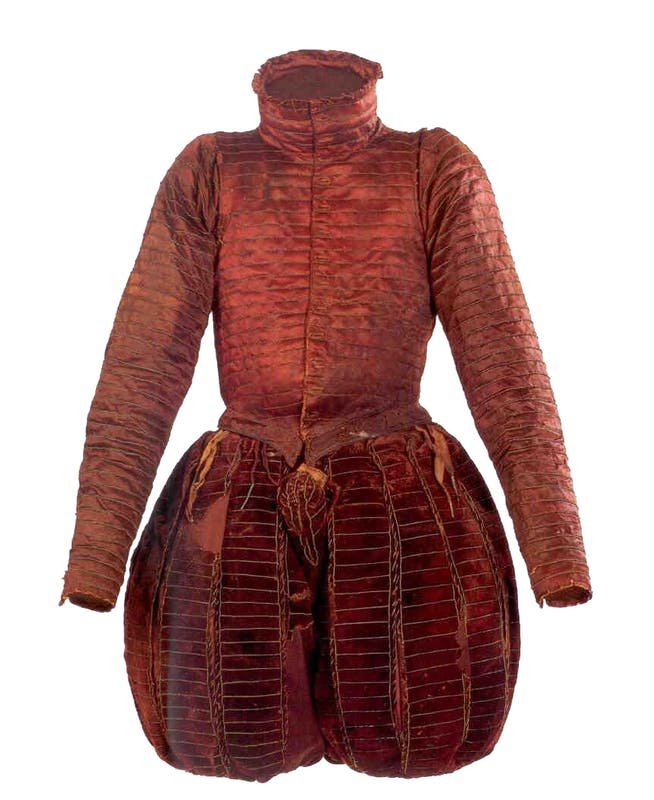

The doublets are of similar slim cut, with a high neck and dropped front waist Stripes are the most commonly seen decoration, both horizontal and slanted. The breeches have many decorated panes, with the satin lining beneath.
I found some lovely red silk no-slub dupion at Home Yardage and bought a 50m roll of black braid from Greenfields for the decoration, where I also lucked on a packet of black turks-head knot buttons – perfect!
Construction
I based the pattern on Janet Arnold’s drawings of Don Garzia’s suit, adapted to Nico’s measurements. However, since I wanted to run the braid down the outer sleeve, I changed the sleeve pattern to move the seam under the arm. (At this time, I didn’t realise how important the rotation was to the fit!)
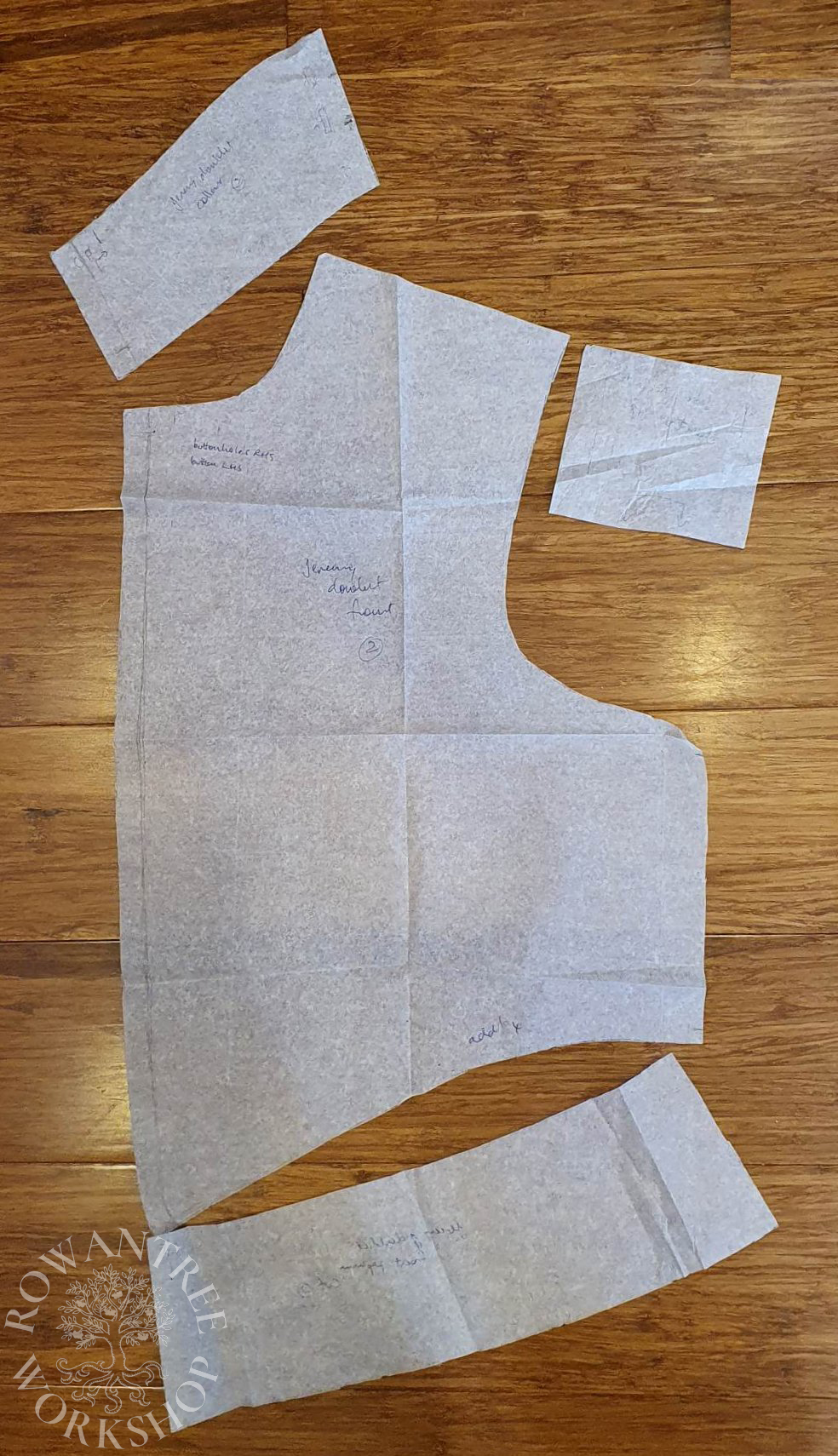
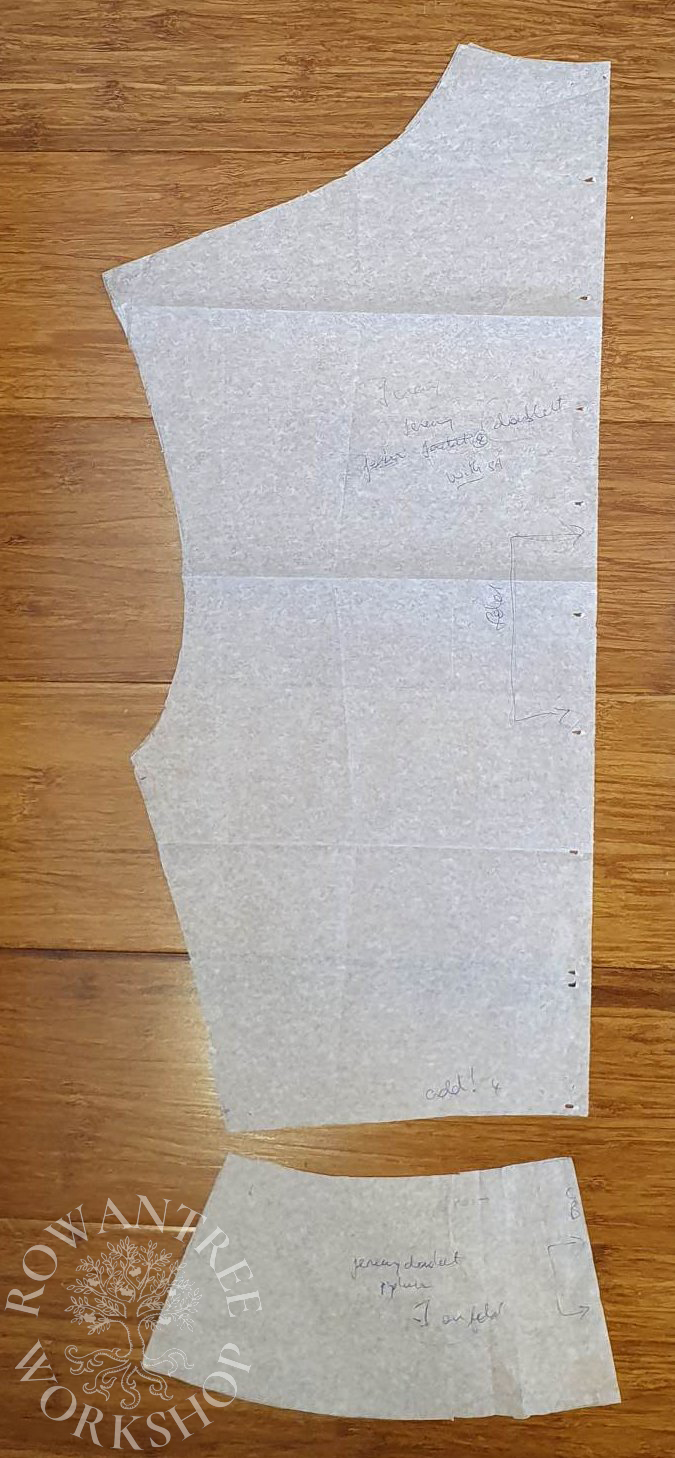
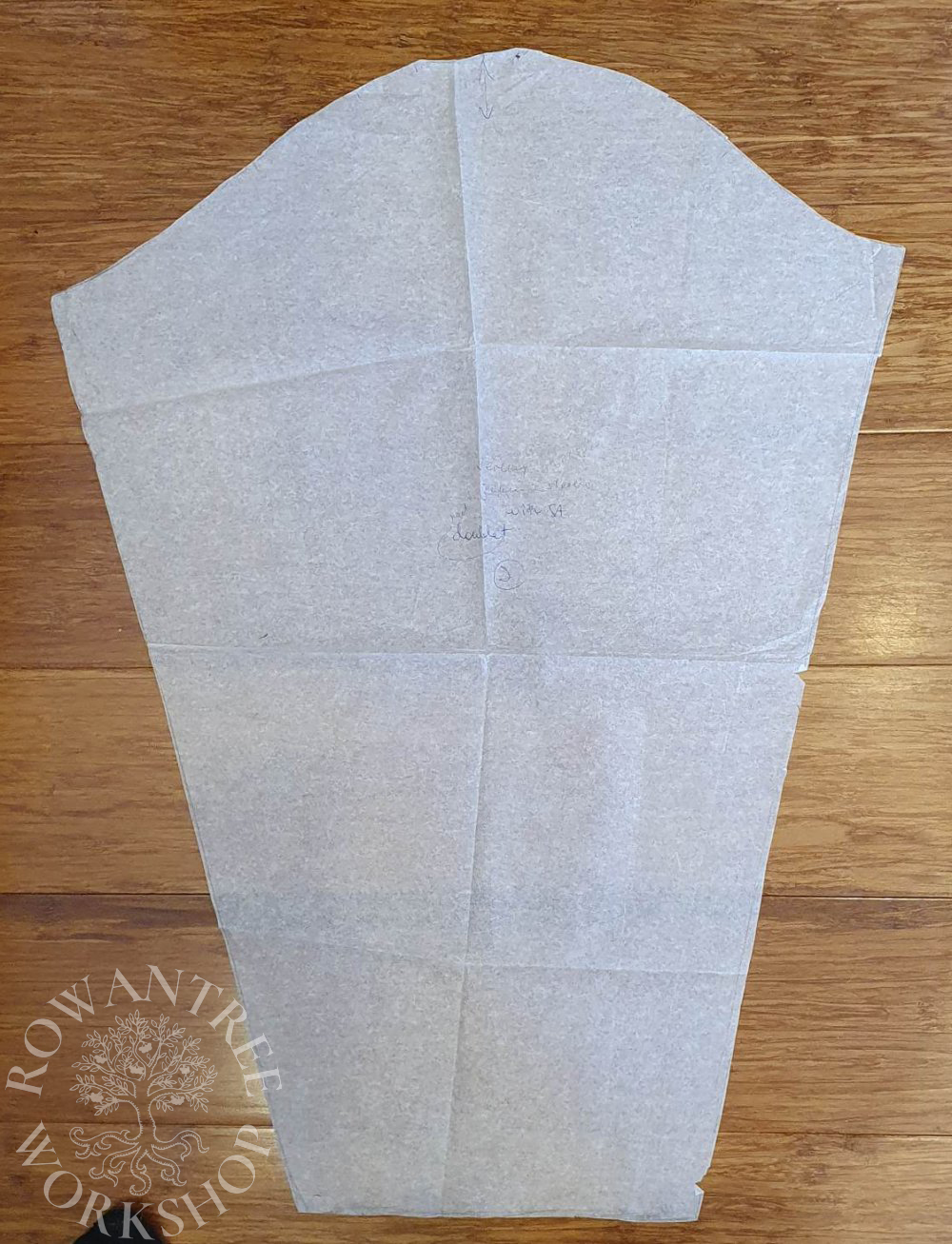
For the doublet, I cut the pieces from silk plus an interlining of cotton, and basted these together. I constructed the doublet body before adding the braid decoration, to ensure I could flow the lines of braid over seams, and could match the angles.
I had a lot of braid to apply, so I tested the idea of cutting thin strips of bond-web and ironing the braid in place. The test worked, so I applied the braid except for the edge bands. I did the same for the bases (skirts) but applied the braid to the sleeves before constructing, to make it easier.
Ironing the braid onto the sleeves while flat was the only option, so I matching braid points carefully – then met up beautifully at the seam. I made the shoulder tabs as a single strip to save time, then cut this up and basted to the sleeve head, then sewed the bases and sleeves to the doublet.
By this point it was clear that the bond-web was not strong enough – the braid was already coming off! So I had to sew it all down by hand – harder now it’s assembled.
I made up the lining in black cotton twill for the body and lighter cotton for the sleeves, bag-lined it and then sewed on the final rounds of braid around the edges by hand (lesson learned).


I machined the front buttonholes, carefully spaced to work with the braid design, then sewed the sewed the buttons along the front edge. I made up a lacing strip using metal eyelets and whipped this into the waist seam, to complete the doublet.
Trunkhose
Both the lining and the panes are cut to the same pattern around the crotch and height, but the lining is wider, to puff out between the panes.
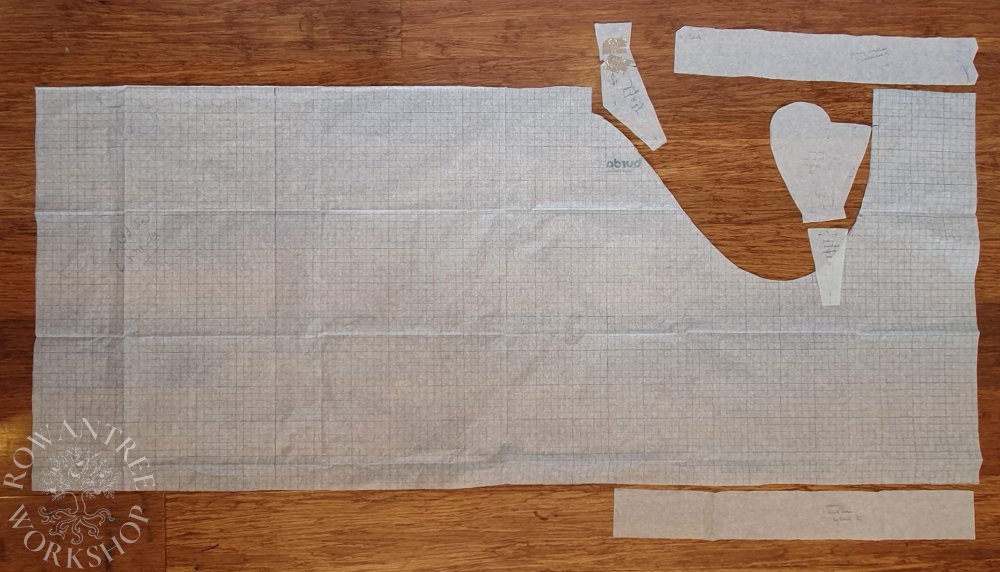
I could not find black silk of the right weight and had to settle for a synthetic satin lining. Arnold’s pattern does not include an inner lining, so I made up the black satin, gathered it into the waist and leg bands and hemmed these over.
Don Garzia’s trunkhose has 13 panes per leg, but I simplified this to 8 wider ones. I also simplified the braid design, with long edge stripes only. I made the panes of silk, interlined and lined with fine black cotton, cut them to match the pattern shape around the crotch and sewed the crotch seam.
I finished the tops of the remaining panes, then pleated and hand-sewed them to the base of the waistband. I hand-sewed in the back gusset, which goes up into the waistband. I pleated the bases of the leg panes and hand-sewed them into the top of the leg bands.
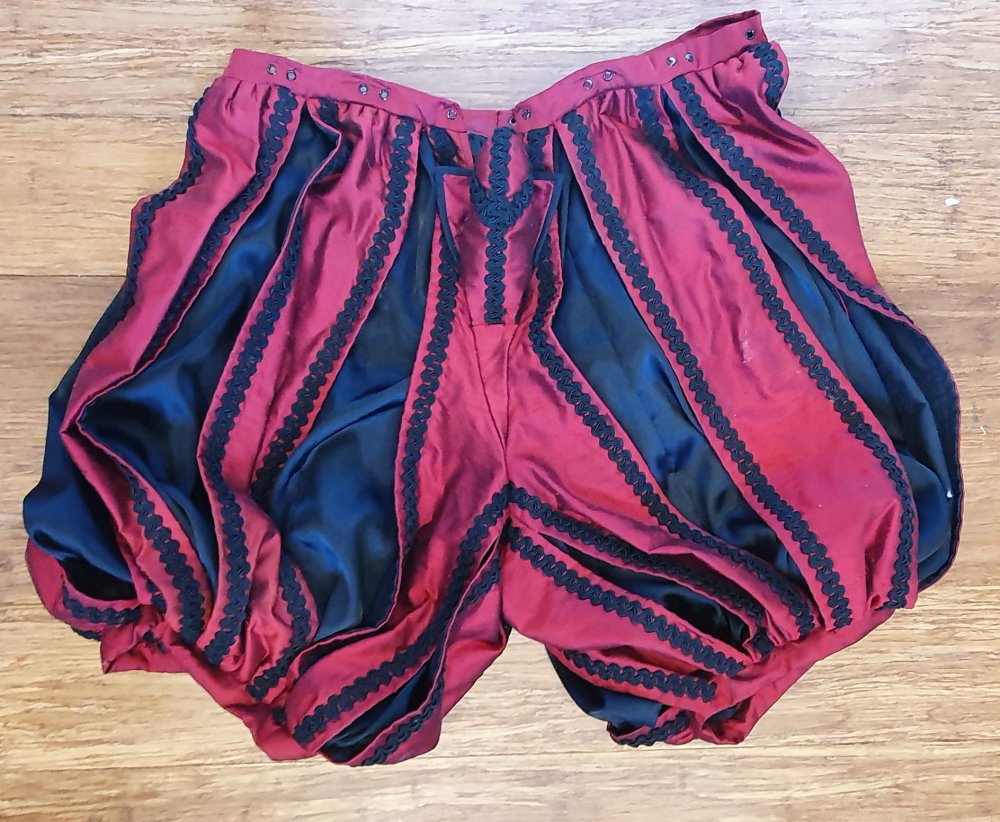
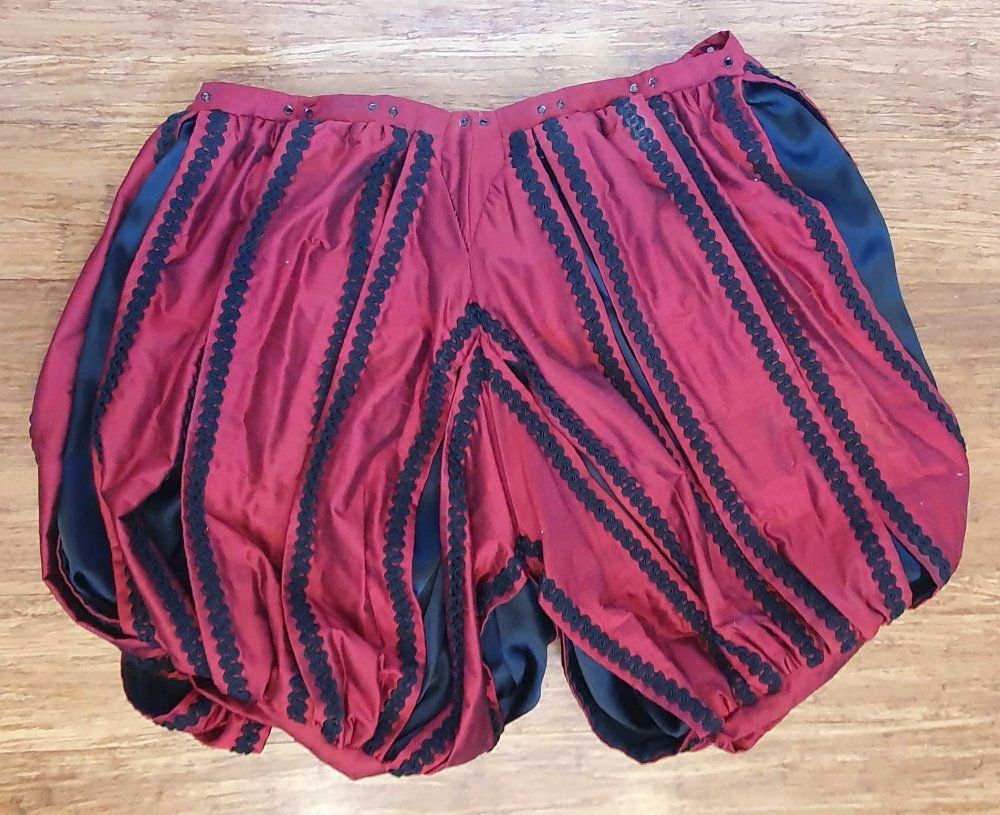
I made up the codpiece, stuffing it with wool and binding the outer edge with black bias binding. I pleated this into the crotch gusset, then hand-sewed this into the front seam. I added metal eyelets to the waistband to match the doublet, and to the front opening, but ran out of time to oversew them with matching embroidery thread.
Nico tried it all on and it fitted beautifully, but without a lining, the trunkhose were too long and looked flat, not rounded. I solved this by adding a set of tapes inside, on the inner and outer leg, which worked well enough.
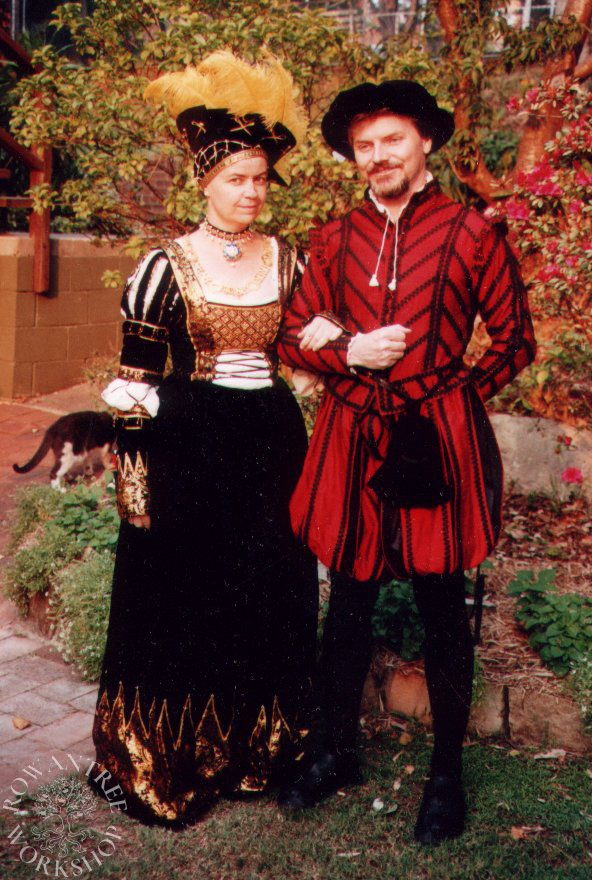
Afterthoughts
Looking back on this, I would certainly approach the construction very differently, with historic techniques and materials. And I never did over-sew the eyelets… But I still love the design and colour of this suit and the decorations are still striking.
Some years later I made a black and gold suit based on this pattern, but with some improvements.

